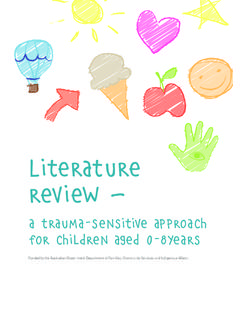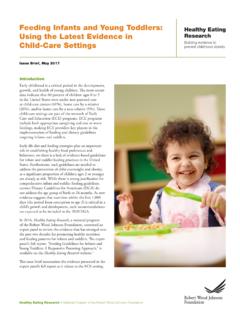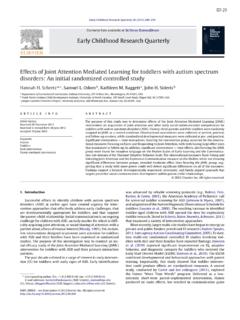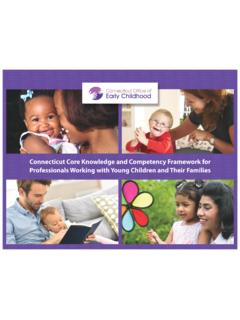Transcription of A basic introduction to child development theories
1 1/16 Developmental perspectives The NSW Office of child Care (Department of Community Services, DoCS) published a document in 2002 called the NSW Curriculum Framework for Children's Services: A practice of relationships (.pdf MB). This document has some interesting perspectives of the role of child development and developmental norms. It is important to consider multiple A basic introduction to child development theories A basic introduction to child development theories 2/16 Centre for Learning Innovation State of New South Wales, Department of Education and Training, 2006 Contents child development theorists .. 3 Use of 3 Emotional and psychological development .. 4 Erik Erikson .. 4 John Bowlby .. 4 Mary Ainsworth .. 4 Cognitive development .. 4 Jean 4 Lev Vygotsky .. 5 Other theories of cognitive development .
2 7 Physical development .. 7 Language development .. 7 Lev Vygotsky .. 8 BF Skinner, John Watson and Albert Bandura .. 8 Noam Chomsky .. 8 Other language theories .. 8 Social development .. 9 Uri Bronfenbrenner .. 9 Lev Vygotsky .. 9 Social play .. 10 Jean Piaget and Sara Smilansky .. 10 Sara Smilansky .. 10 Mildred Parten .. 12 Kenneth H. Rubin .. 13 Jerome Singer .. 14 development of autonomy and independence .. 14 References .. 16 A basic introduction to child development theories A basic introduction to child development theories Centre for Learning Innovation 3/16 child development theorists There are a number of different theorists associated with child development . The table below lists those most well known. Table 1: Major theorists Theoretical approach Principles of the theory Theorist Maturation Growth and development occur in orderly stages and sequence.
3 The individual genetic timetable affects rate of maturation. Arnold Gesell (18801961) Psychodynamic Behaviour is controlled by unconscious urges. Three components of the mind are id, ego and super ego. Sigmund Freud (18561939) Psychosocial Personality develops in eight stages throughout a lifetime. development is influenced through interactions with family, friends and culture. Jean Piaget (18961980) Lev Vygotsky (18961934) Cognitive Qualitative changes in the way children think. The child is considered an active learner going through stages. Erik Erikson (19021994) Behaviourist Learning is gradual and continuous. development is a sequence of specific conditional behaviours. Main emphasis is on the environment, not heredity. Observable behaviours are considered most important. John Watson (18781958) BF Skinner (19041990) Albert Bandura (1925) Ecological Balance between nature and nurture.
4 child is placed in the middle of concentric factors which all influence the child . Emphasis is placed both on environment and heredity. Uri Bronfenbrenner (19172005) Information processing theory We all have an innate learning ability. Children are born with specialised information processing abilities that enable them to figure out structure of development . Noam Chomsky (1928 Use of theories All of the above theorists have valid views that can be useful to consider. Many children's services professionals believe in taking an eclectic approach to theory. By understanding each theoretical approach, you can use parts of the theory, if the contextthe child and the situationseem appropriate, and if it is a useful way to further your understanding. A basic introduction to child development theories 4/16 Centre for Learning Innovation State of New South Wales, Department of Education and Training, 2006 theories can help you interpret your observations, but are of little or no use without your Emotional and psychological development Three theorists specifically associated with emotional and psychological development are Erik Erikson, John Bowlby and Mary Ainsworth.)
5 Erik Erikson Erik Erikson built upon Sigmund across the lifespan. He believed that in each stage we face a crisis that needs to be resolved in order for us to develop socially and emotionally. Each stage has a positive or negative outcome, though we tend not to be at either end of the spectrum. The outcome of the stage is determined by our environment, and the care giving strategies or experiences to which we are exposed. John Bowlby John Bowlby examined the attachment relationship between parents and their children. He identified four phases in which attachment develops. He believed that children are born with a variety of behaviours that encourage parents and others to be near to them. These proximity-seeking behaviours include laughing, gurgling and crying. Attachment of the child and parent develops over a period of time and is mainly achieved by the routine care giving tasks that parents and children are involved in (Berk, 1996).
6 Mary Ainsworth Mary Ato test the quality of the attachment relationship between mothers and their children. The Strange Situation will determine whether the infant is securely attached, insecurely attached or avoidant of the parent (Berk, 1996). Cognitive development Theorists such as Piaget, Vygotsky and Skinner developed theories based on research around cognitive development , and a variety of approaches to teaching have since grown from that work and the work of other theorists. Other approaches concerned with cognitive development include ehaviourism, nformation processing, and onstructivism. Jean Piaget passed through four separate stages and changed qualitatively in each of these stages. He emphasised the importance of maturation and the provision of a stimulating environment for children to explore. He believed children were active es are: A basic introduction to child development theories A basic introduction to child development theories Centre for Learning Innovation 5/16 Sensory-motor stage Birth to 2 years.
7 This stage consists of six sub-stages infancy. Children are using their physical or motor skills and their senses to explore their world and develop their cognitive understandings. Pre-operational stage 2 to 7 years. In this stage children are less reliant upon senses and physical exploration and, according to Piaget, During this stage, for example, children can be shown that two balls of dough are exactly the same size, and they will agree that the balls are the same size, but when one is flattened, they will usually tell you that one of them is now bigger. This inability to conserve is a feature of the preoperational stage. Concrete operations 7 to 12 years. In this stage, which aligns with middle childhood, children are beginning to be able to demonstrate much more logical thinking, although they need concrete materials to help them reach the correct conclusions.
8 Thus in this stage you will see children working on mathematical problems but using blocks, counters or even their fingers to help them work out the answer. Formal operation 12 years and over. This final stage encompasses the rest of our lives. Piaget believed that once we reached the age of 12 we were capable can deal with much more complex issues. Piaget has been, and continues to be, an important influence on how we think about s thinking skills. He was important because he saw children as active participants in their own learning. s thinking developing in stages, but he emphasised the social and cultural influences on a s learning. Lev Vygotsky While this Russian theorist died in 1934, his work only found a broader audience in the 1990s. Vygotsky developed his theories around the same time as Jean Piaget yet he emphasised the importance of relationships and interactions between children and more knowledgeable teachers or peers (Berk, 1996).
9 Unlike Piaget, Vygotsky did not see the child as a solitary discoverer of knowledge, but as learning within social interactions that involve communicating. Vygotsky therefore also emphasised the role of language in the development of thinking processes. Like Piaget, he saw children as active partners in their own learning, and increasingly so as their ability to interact with others develops. He therefore emphasised the importance of language development , learnis cognitive development . A basic introduction to child development theories 6/16 Centre for Learning Innovation State of New South Wales, Department of Education and Training, 2006 It was Vygotsky that thinking in concepts was not possible without verbal thinking. While thought and language initially develop independently, they are merged once language is developed to create verbal thought.
10 Speech and thought change over time and become more internalised. Vygotsky saw the ads behaviour. When you scaffold a building, you support it structurally while internal developments occur. It is a common sight on building sites. We scaffold chils development almost without thinking. Consider this example: Bonnie is completing a three-piece puzzle with knobs on top. She has the last piece over the space, but it is upside down. She pushes harder. Her caregiver says, 'Try turning it, Bonnie', but Bonnie looks confused. The caregiver puts her hand over Bonnie's, and turns the piece slightly, saying, 'See, Bonnie? Turn it'. Vygotsky also saw the childs ability to think logically as developing in stages. He outlined four different stages of conceptual development , as in Table 2 below. Table 2: , adapted from Nixon and Aldwinckle (2003) Stage Characteristics 1.




